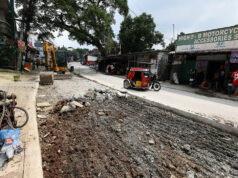AGRICULTURAL TRADE, or imports and exports combined, fell 20% year on year by value to $4.07 billion in the second quarter, with both imports and exports posting declines, according to the Philippine Statistics Authority (PSA).
The PSA said agricultural exports fell 20.6% to $1.45 billion during the quarter and represented 11.4% of total Philippine exports.
Edible fruits and nuts, peel of citrus fruit and melons accounted for the largest segment of exports at $576.86 million, or 39.7% of all agricultural exports, followed by animal or vegetable fats and oils and their cleavage products at $216.95 million, and preparations of vegetables, fruits, nuts or other parts of plants at $171.32 million.
Agricultural imports fell 19.6% to $2.62 billion and accounted for 16.5% of total imports overall.
Cereal imports amounted to $636.25 million, followed by miscellaneous edible preparations at $368.90 million, and residues and waste from food industries and prepared animal fodder $252.48 million.
Within ASEAN, Malaysia was the top destination for exports, accounting for 26.5% or $36.34 million, while Vietnam was the top source of imports with 34.1% of the total or $334.18 million.
The top agricultural commodities exported to ASEAN member-countries were tobacco and manufactured tobacco substitutes, worth $49.34 million, followed by preparations of cereal, flour, starch or milk and pastrycooks’ products at $16.96 million; and fish and crustaceans, molluscs, and other aquatic invertebrates $12.24 million.
The top agricultural commodities imported from other ASEAN countries were cereals at $282.45 million; miscellaneous edible preparations $266.28 million; and animal or vegetable fats and oils and their cleavage products, prepared edible fat, animal or vegetables waxes $171.14 million.
In the European Union, the PSA said the Netherlands was the country’s top buyer and supplier of agricultural products at $114.85 million and $56.43 million, respectively. — Revin Mikhael D. Ochave



